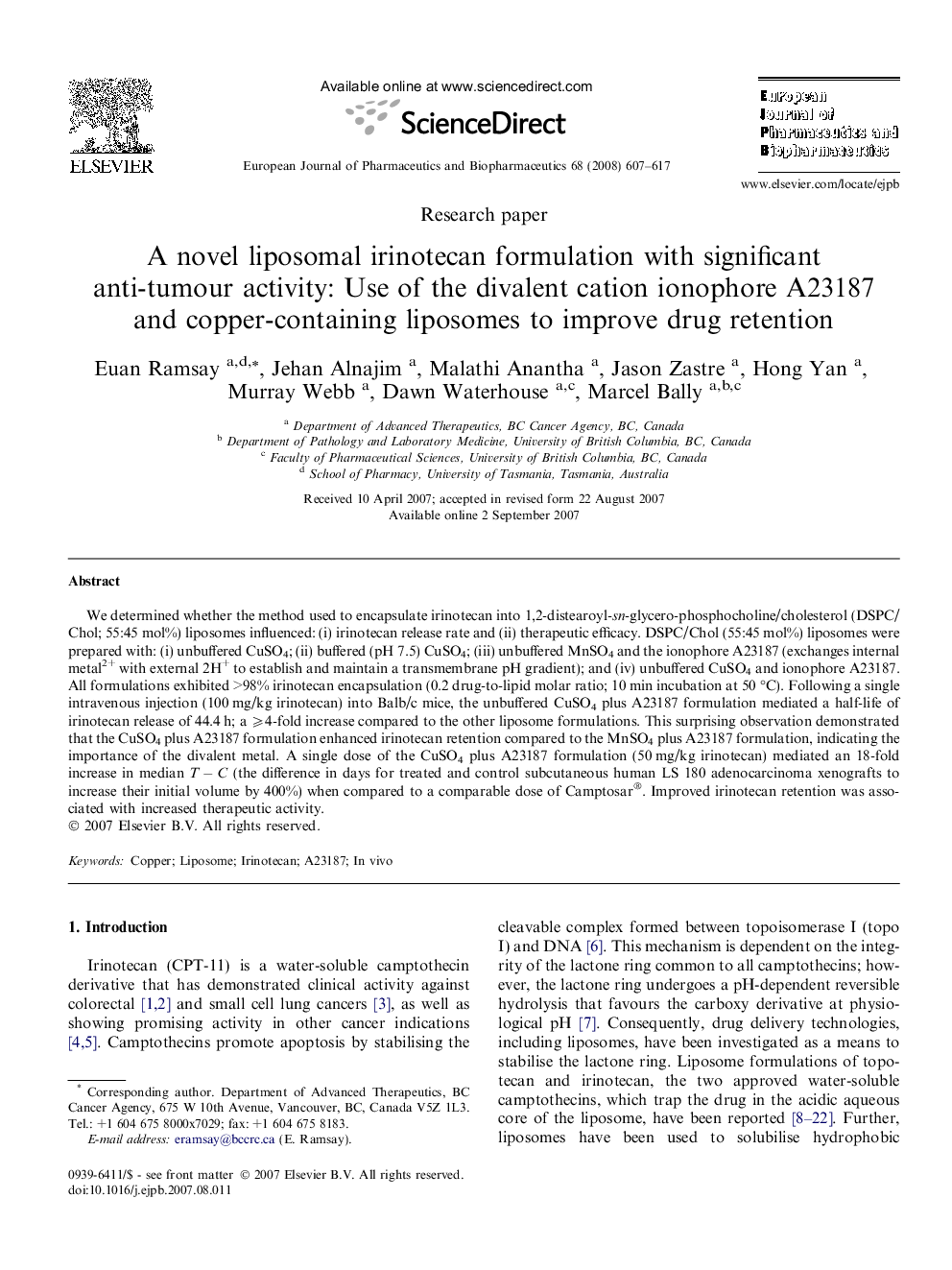| Article ID | Journal | Published Year | Pages | File Type |
|---|---|---|---|---|
| 2084872 | European Journal of Pharmaceutics and Biopharmaceutics | 2008 | 11 Pages |
We determined whether the method used to encapsulate irinotecan into 1,2-distearoyl-sn-glycero-phosphocholine/cholesterol (DSPC/Chol; 55:45 mol%) liposomes influenced: (i) irinotecan release rate and (ii) therapeutic efficacy. DSPC/Chol (55:45 mol%) liposomes were prepared with: (i) unbuffered CuSO4; (ii) buffered (pH 7.5) CuSO4; (iii) unbuffered MnSO4 and the ionophore A23187 (exchanges internal metal2+ with external 2H+ to establish and maintain a transmembrane pH gradient); and (iv) unbuffered CuSO4 and ionophore A23187. All formulations exhibited >98% irinotecan encapsulation (0.2 drug-to-lipid molar ratio; 10 min incubation at 50 °C). Following a single intravenous injection (100 mg/kg irinotecan) into Balb/c mice, the unbuffered CuSO4 plus A23187 formulation mediated a half-life of irinotecan release of 44.4 h; a ⩾4-fold increase compared to the other liposome formulations. This surprising observation demonstrated that the CuSO4 plus A23187 formulation enhanced irinotecan retention compared to the MnSO4 plus A23187 formulation, indicating the importance of the divalent metal. A single dose of the CuSO4 plus A23187 formulation (50 mg/kg irinotecan) mediated an 18-fold increase in median T − C (the difference in days for treated and control subcutaneous human LS 180 adenocarcinoma xenografts to increase their initial volume by 400%) when compared to a comparable dose of Camptosar®. Improved irinotecan retention was associated with increased therapeutic activity.
